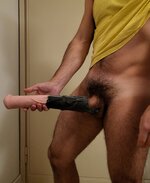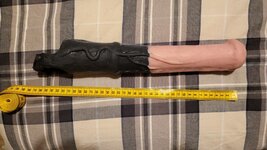furt0p
Lurker
Hi, recently I did several experiments to create a wearable dildo in the shape of a horse cock, is the second usable attempt.
Unfortunately the inner hole is too small to be worn by me (it does not fit everything even when it is soft), the hole made to insert the balls is too small and does not widen sufficiently, moreover it has several problems on the surface (bubbles inside the silicone).
Before making the third attempt I thought I'd ask for advice here in order to improve the result.
what do you think?


Unfortunately the inner hole is too small to be worn by me (it does not fit everything even when it is soft), the hole made to insert the balls is too small and does not widen sufficiently, moreover it has several problems on the surface (bubbles inside the silicone).
Before making the third attempt I thought I'd ask for advice here in order to improve the result.
what do you think?




